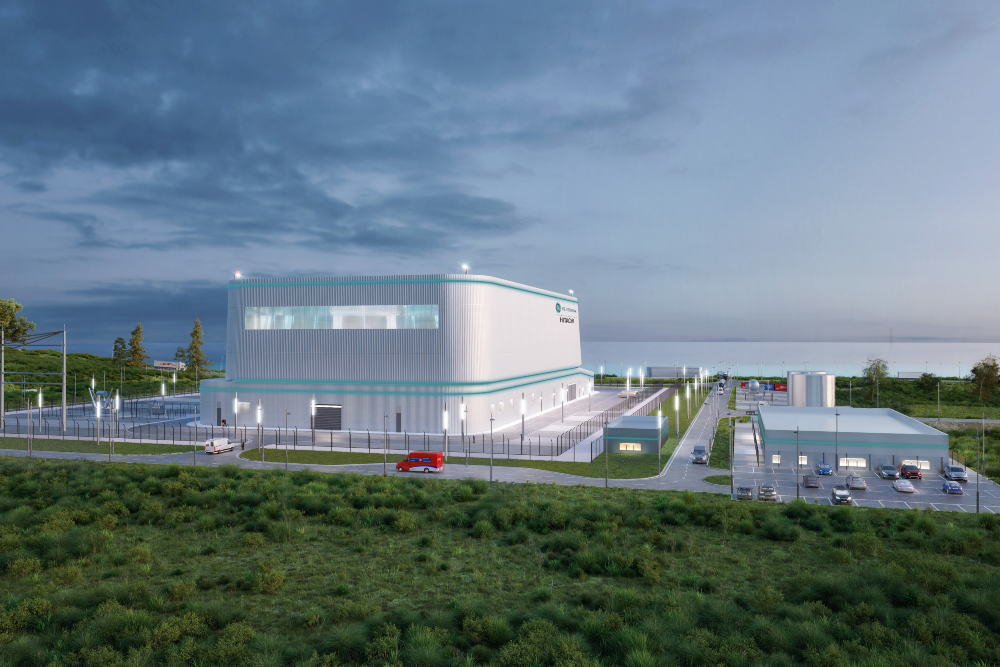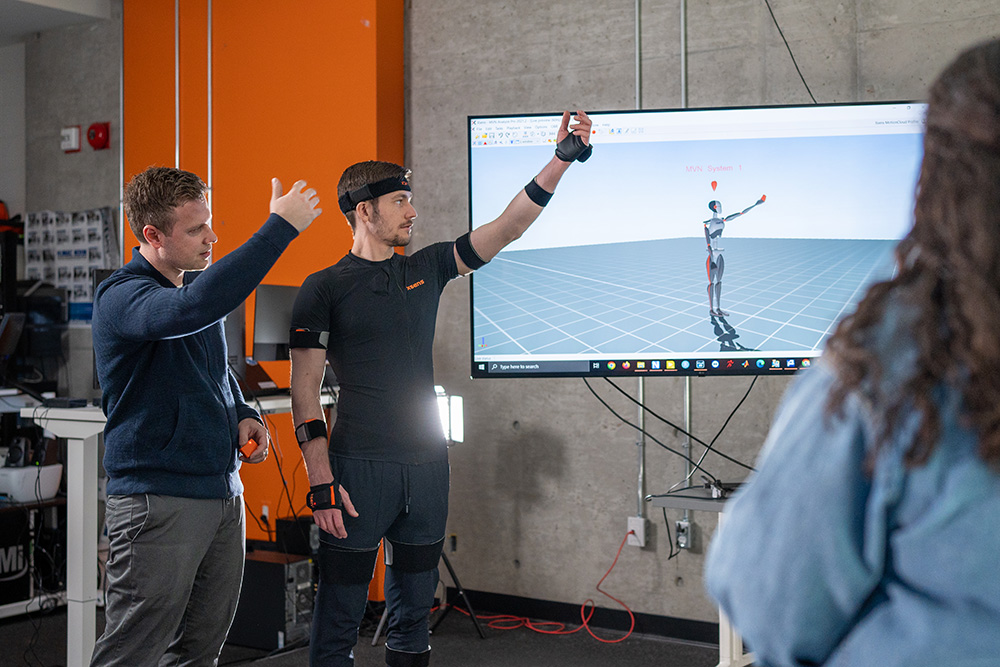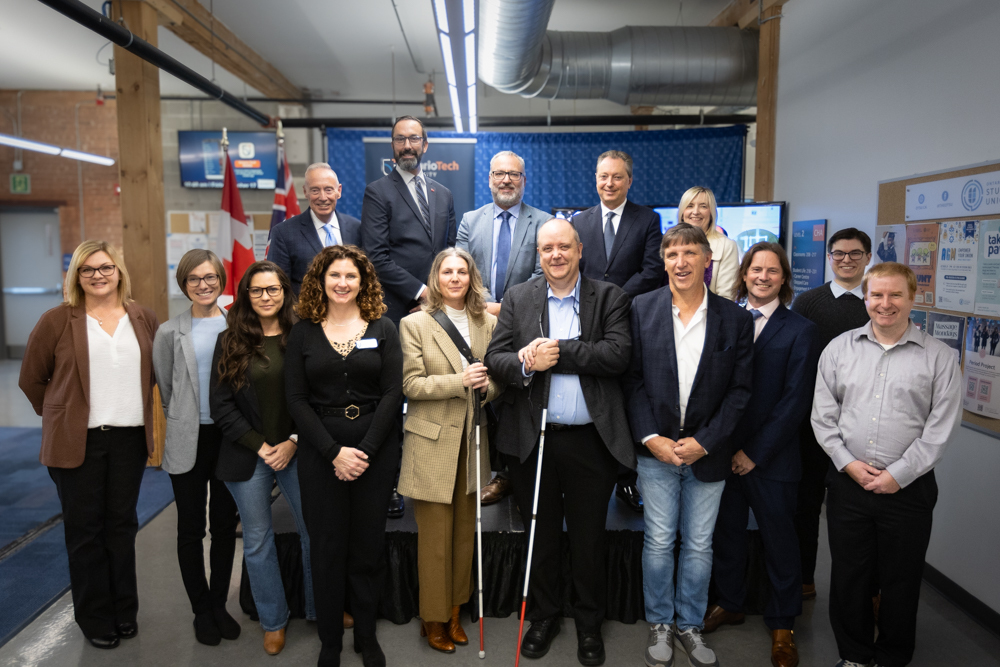What are small modular reactors, and how are they shaping Canada’s low-carbon future?
Ontario Tech nuclear energy expert Dr. Kirk Atkinson shares answers
September 12, 2025

As demand grows for reliable, low-emissions electricity, small modular reactors (SMRs) are looking like a strong solution. These promising nuclear technologies offer an option that could reduce our reliance on fossil fuels and ensure a reliable, affordable and sustainable supply of energy, especially in less-populated, rural regions.
Dr. Kirk Atkinson, Associate Professor in Ontario Tech University’s Faculty of Engineering and Applied Science, and Director of the university’s Centre for Small Modular Reactors, explains why SMRs matter, what they mean for communities like Durham Region, and how Ontario Tech is helping lead SMR development in Canada:
What are SMRs and how are they different from traditional nuclear reactors?
SMRs are similar to traditional nuclear reactors, but differ in their size, construction method and deployment. ‘Small’ is a relative term, but SMRs typically produce up to 300 megawatts of electricity (about one-third the capacity of each of the existing large reactors in Ontario). At the upper end of the typical range, a 300-megawatt SMR could generate enough power to supply about 300,000 homes, roughly half the homes in Durham Region.
To meet the safety standards expected by the Canadian Nuclear Safety Commission, our domestic regulator, some SMRs have passive that enable them to safely shut down and self-cool without human intervention or backup power supplies that existing reactors often require.
SMR sizes range from eight feet (approximately 2.4 metres wide; about the width of a shipping container, as in the case of a ‘micro’ or ‘nano’ reactor like Ontario Tech’s Canadian Uranium Energy Bridge (CUEB) concept), all the way up to a football field. By design, SMRs take up less physical space than traditional nuclear reactors, and similarly, the exclusion zone around them (the area restricted to the public) is smaller.
Climate change is one of the biggest challenges facing people and our planet. To help fight it, we need clean ways to make electricity, and fast. SMRs are a promising solution because they can be built from standardized parts, in factories and deployed more quickly than traditional power plants.
Will SMRs replace traditional nuclear facilities? What timeframe are we looking at for SMR rollout?
Due to the diversity of designs, SMRs are not a one-size-fits-all solution; they’re more likely to complement existing large reactor facilities than replace them, or be deployed where large reactors cannot.
As for timing, the first SMR being built at OPG’s Darlington New Nuclear site (the BWRX-300 design) is expected on the grid, powering Durham Region, before 2030. Three further SMRs are expected at Darlington in the years thereafter. Other reactors based on the same technology should follow elsewhere in Canada throughout the 2030s. More advanced SMRs (such as) are not likely to be ready until the late 2030’s or early 2040s. So, we’re talking about staged deployment across the next two decades and beyond.
In what scenarios would SMRs be most helpful?
In densely populated or highly industrialized regions like the Greater Toronto Area where you need a lot of power, it may make more economic sense to build a few large nuclear reactors rather than many smaller SMRs. However, SMRs may be better suited in places without hydro power or reliable grid connections, such as smaller provinces and less-populated areas with lower, more dispersed energy demands.
SMRs are also a strong option for replacing coal-fired plants. In Saskatchewan, where coal stations generate about 300 megawatts each, swapping one for an SMR the size of Darlington’s could be a good fit.
The smaller SMRs, micro or nano reactors, are better suited for deployment in remote communities. Access to nuclear energy could help reduce their reliance on diesel generators, providing safe, clean, stable electricity, and being less dependent on fuel supply, possibly leading to new economic opportunities. They could also provide independent or backup power for industrial facilities, mines, or AI data centres.
Ontario Power Generation’s plan to build Canada’s first grid-scale SMR adjacent to Darlington Nuclear Generating Station has recently made headlines. Why is this project so significant?
This is the Western world’s first SMR deployment on a scale large enough to supply power to a regional or national electricity grid. It’s a milestone for Canada and globally. Although the design of the Darlington SMR is American, much of the manufacturing, the uranium fuel itself (prior to enrichment), and workforce is Canadian. Representatives from countries around the world are coming to Durham Region to see Darlington’s SMR progress. It’s a $7-billion investment that will help our supply chain, create jobs and position Durham Region and Canada as a nuclear powerhouse.
Will SMRs affect the price of electricity?
In Ontario, one of the reasons for our relatively low electricity prices is the nuclear energy we have in place right now. SMRs won’t make electricity cheaper in the short term. They require a large, up-front investment, particularly because designs like the one at Darlington are first-of-a-kind. But if we divide that cost over 70 years into per-megawatt pricing, we may see a long-term payoff that will help keep electricity prices stable in the future. Of course, if many of them eventually get built, the per unit cost will likely fall, and that could have positive impacts on electricity prices. We’ll have to wait and see.
How do SMRs work alongside renewable energy sources?
Along the Highway 401 corridor, from the Quebec border to Windsor, we have a large population and lots of heavy industry, so we need a reliable, around-the-clock supply of electricity. We get some of that from hydroelectric power (electricity generated from moving water, like what's produced at Niagara Falls), but we’re maxed out and can't build any more of that. Sources like wind and solar don’t produce energy all the time and require us to store energy in batteries. Unfortunately, our cold winters require us to use energy to keep the batteries warm. The batteries also need recharging each time they are discharged, which can be challenging when generation is intermittent.
SMRs, and nuclear power in general, complement renewables by offering stable, always-on and ‘dispatchable’ electricity, meaning it’s there when we need it.
What will Darlington’s new SMR(s) mean for everyday life in Durham Region?
In practical terms, it means more electricity, more jobs and local prosperity. The project will create long-term employment, support local businesses and generate tax revenue. It’s very good for students in the region, like those studying Nuclear Engineering at Ontario Tech, and for those studying other disciplines too.
People often forget that nuclear energy isn't just about science, engineering and technology; it needs all kinds of roles that span skilled trades, administration, communications and operations. For this reason, it’s a good opportunity for career pivots and programs such as Ontario Tech’s Nuclear Career Accelerator that will help shift workers into careers this industry demands.
How is Ontario Tech supporting SMR development through research, talent development and industry collaboration? What kinds of opportunities might it create for students, researchers and local partners?
Ontario Tech offers SMR-focused courses in its undergraduate and graduate programs and through Continuous Learning. We host Canada’s only International Atomic Energy Agency Collaborating Centre, which has a focus on SMRs, as well as the Centre for Small Modular Reactors.
Many of our professors have received industry- and/or federal government-backed research grants to explore SMR-related topics, both technical and social. In addition to providing a research focus, these projects offer collaboration opportunities and economic benefits for local partners, including Indigenous businesses. We proudly have alumni working at GE Vernova and other large SMR companies, as well as micro reactor companies.
How is the university contributing to national progress in the energy sector, and specifically in SMR development?
Ontario Tech’s expertise spans the entire clean-energy spectrum, from nuclear and hydrogen to wind, solar and geothermal. We don’t see energy as ‘either-or’: we do it all. Our experts serve on national advisory committees and help shape policy. Our labs and facilities, including our proposed Subcritical Assembly, and research and innovation hubs like the Brilliant Energy Institute, drive progress across sectors. We call ourselves ‘Canada’s nuclear training ground’ for good reason: we’re helping to build the skilled workforce that SMRs and the entire energy system will need going forward.
1 > 1



